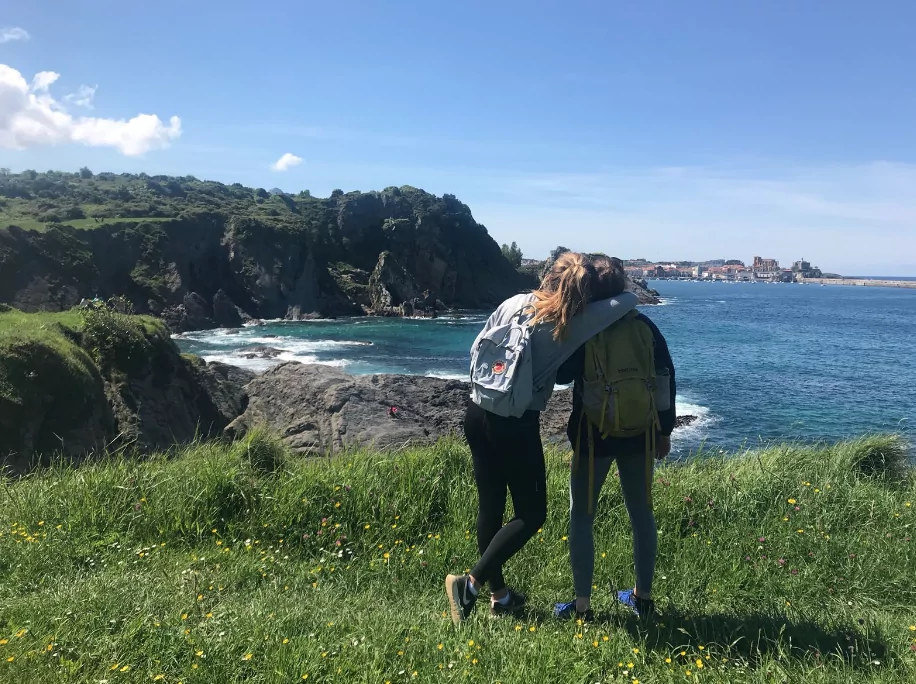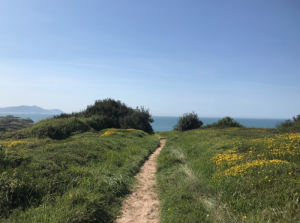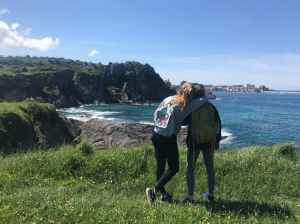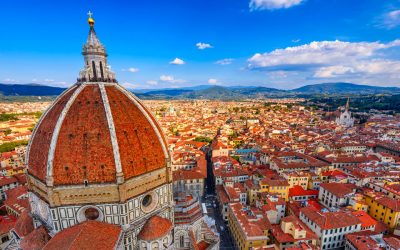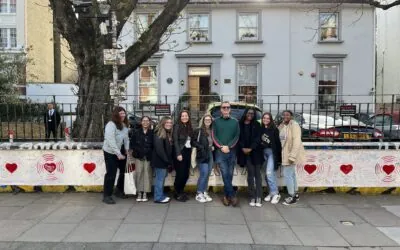This post comes from Emma Herdman who is currently studying in Bilbao, Spain from Tufts University.
Everybody’s cried at least once, everybody’s laughed at least twice
It is subtly springtime here in Bilbao. As someone who grew up in the a mid-Atlantic and now lives in the Northeast, I have never straight up skipped a winter. And although I will admit at times living in Bilbao has felt like unwittingly signing up for a four month long wet t-shirt contest (I basically haven’t taken off my rain jacket since getting here), it was no New England winter. During the few days I spent writing and editing this post, the sun was out for what seemed like 20 hours some days, and others (like today) reverted to rain and clouds. But the real prize is that when it finally does get sunny everything is lush and green and EVERYONE is enchanted.
I have always thought of entering spring kind of like a turbulent flight landing. Just when you think you’ve finally touched down at your destination the nose of the plane jerks up and you hover in a bumpy limbo before the tires finally meet the asphalt. Bilbao is similar, but everyone can feel that the sun is almost here to stay.
Returning from spring break after spending two weeks traveling, mostly with my family, was a bit of a strange experience, but I was ushered back to Basque country with everything in bloom.

These daisies blanket the entire ground in Bilbao. They even grow out of all of the cracks in the sidewalk. Amazing!
I had a Sunday to readjust and recuperate, which was a great decision on my part because I think that Sundays are the best days in Bilbao. The streets runneth over with Flea markets of flowers, old books, and (probably magical) crystals. Bars are full and people spill out into the streets with pinxtos and cervezas.
Overflowing bars is a common activity even when it requires an umbrella, but when the sun shows her face everyone is outside in the city enjoying their day of rest and relaxation with friends and family.
Life is good in sunny Bilbi.
Now, as my good friend from home recently reminded me, even though I’m gonna include pictures and anecdotes of the sun and the flowers and talk about how much I have been hiking and dancing in this blog, rest assured that I am also a real life girl who has good and bad days. As the Naked Brothers Band said: “everyone has cried at least once, everyone has laughed at least twice”. It’s true. Sometimes I barricade myself in my room when I get overwhelmed with school projects and language barriers and sometimes I cry while listening to a wistful podcast on a Sunday morning because I miss my friends and I definitely experienced some homesickness after spending a week traveling with my family and then immediately getting onto a five hour bus ride all alone to return to an apartment in Bilbao.
So even though I am just a young twenty one-year-old living abroad in Europe for the first time and life is for the most part very fun, don’t forget that I’m not simply overjoyed all the time, okay? And you don’t have to be either!
There are things about life here that are uncomfortable too.
One thing that I have been struggling with how to approach since I got to Bilbao is that in general people way less covert about making racist/ xenophobic comments than I am used to. I am white with dark hair so I sometimes pass as a local (before I try to speak Spanish). Occasionally people make comments to me about the black and brown community of Bilbao which I would probably hear in my community at home, and as an outsider with a language barrier, it is hard to know how to respond to them. This is not to say that racism does not exist in the United States, in fact the disturbing and harmful rhetoric around immigrants (especially black/ brown/ Islamic immigrants and citizens) has been brought into the spotlight by the president and his supporters. However, especially in Basque Country, with its tense recent history of oppression under Franco and its ongoing fight for autonomy, non-basque people here seem particularly marginalized. So when a professor in my university cautions me that when I go out to clubs I should be “careful of brown men” (in this case mostly referring to Northern African Immigrants), or the stores on every corner that sell candy and knick knacks are referred to as “Chinese junk shops” because they are mostly run by eastern Asian people, I feel implicit in accepting and even supporting those comments when I do not actively oppose them.
As I make more international friends and have this conversation with more people in Bilbao, I learn more about the history of this strange place that I am living. I have even tried to learned some Euskera, one of the oldest known languages in the world, and one which was stifled and viewed as separatist during the reign of Franco wherein Spain was supposed to become a one-party state. Basque people and Basque country have a reputation for being cold and nationalist, which has a lot to do with strong pride for this small isolated culture.
As an outsider, it can be hard to understand this mindset. And while be no means are most of the Basque people I have met during my time in Bilbao radicals, it is interesting to compare the current political climate in the US to the one here. Where disenfranchised groups of people sometimes vocalize their frustrations by placing blame on other communities “outside” of their own.
But this is just a blog about my experience and certainly do not I claim to understand the complex history and politics of Basque Country. I am still forming thoughts on this and trying to figure out how to respond in uncomfortable situations.
But in the meantime the weather is changing and the sun coming out and there are infinite more things to do during my remaining weeks in Bilbao.
Last week, the first week with consistent sunshine since I have been in Bilbao, my friends and I pretty much spent all week in Getxo, which is the coast about 30-40 minutes outside of Bilbao. The landscape is unbelievable, with super lush rolling hills and mountains abutting the ocean. On saturday three friends and I went on a hike in Oma Painted Forest, where the artist Agustín Ibarrola, as you can probably guess, painted the trunks of trees and turned the landscape into an “open air museum”. The patterns and shapes reveal themselves as you walk through the forest, making it a cool multisensory experience.
Just to keep expectations realistic, I should note that Ibarrola completed this work in the early 1980’s, on living trees. A lot of shifting has happened since then and some of the patterns don’t quite line up anymore. He also apparently did not ask permission to use this forest for his project, and the property’s owner cut down some of the trees before the site became officially preserved. Nevertheless it is a beautiful place to visit in the middle of the National Urdaibai reserve and I highly recommend going if you ever find yourself in a sunny day in Bilbao.
I also finally made it to San Sebastian, a Basque beach town about an hour away from Bilbao. There is a funicular there that takes you to the top of a mountain that overlooks the whole coastline and city. Weirdly enough there is also a full, amusement park up there complete with a log ride and haunted house. Kind of bizarre but very worth the view.
As I wrap up school projects and start planning my last few weeks in Bilbao, I definitely look forward to taking in as much as possible about Basque Country. I am super excited for our international student farewell celebration where we get to see “traditional basque sports exhibition”. Which includes “stone lifting”, “log splitting”, and “war-of-tug”. Incredible ingenuity we have here.
And finally I am going to use this opportunity to speak into being the fact that the sun will come back and that there are some more hikes in the beautiful basque landscape ahead.
Augur for now and eskerrik asko for reading!
Note from API: For additional resources on navigating diversity and identity abroad please refer to the following: https://www.apistudyabroad.com/students/diversity-and-identity-abroad/.


